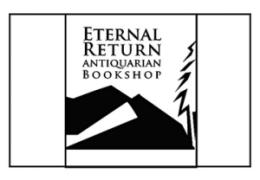
A book of poetry written by Taliban fighters is about to released in Britain. Entitled Poetry of the Taliban, the book is co-edited by Alex Strick van Linschoten and Felix Kuehn and will be published by Hurst on May 17. A U. S. edition from Colombia University Press will follow on September 25.
The book's pending publication has ignited some controversy in Britain -- controversy likely to be re-ignited with fervor when the book reaches U. S. shores later this year. (Published, no less, by a university press in New York City). The former commander for the British armed forces in Helmand was quoted on Friday in the Guardian, "What we need to remember is that these are fascist, murdering thugs who suppress women and kill people without mercy if they do not agree with them, and of course are killing our soldiers." The commander continued, "It doesn't do anything but give the oxygen of publicity to an extremist group which is the enemy of this country."
Poetry of the Taliban features over 200 poems by Taliban fighters, mostly drawn from Pashtun backgrounds, a culture noted for its deep and vibrant poetic traditions. While war and nationalism are the dominant themes, love and self-doubt are also present.
The website for the book strikes an odd balance between blatant promotion and elegant justification. A gratuitous count-down clock, ticking away the days until the book's publication, meets the reader on the first page, but the carefully worded "About the Book" page provides a more nuanced backdrop:
"The contrast between the severity of their professed ideology and the license of the Taliban's aesthetic sensibilities - in which unrequited love, bloody vengeance and the thrill of battle, religion and nationalism, even a desire for non-violence, are expressed through images of wine, powerful women, song, legend and pastoral beauty - provide a fascinating insight into the minds and hearts of these deeply emotional people."
Regardless of opinion on its publication, Poetry of the Taliban will likely fill an empty space in a variety of personal and public collections around the U. S. when it arrives here this fall.













